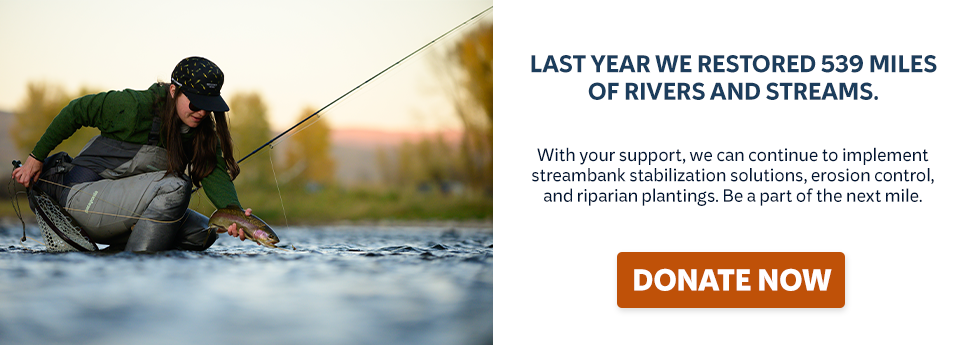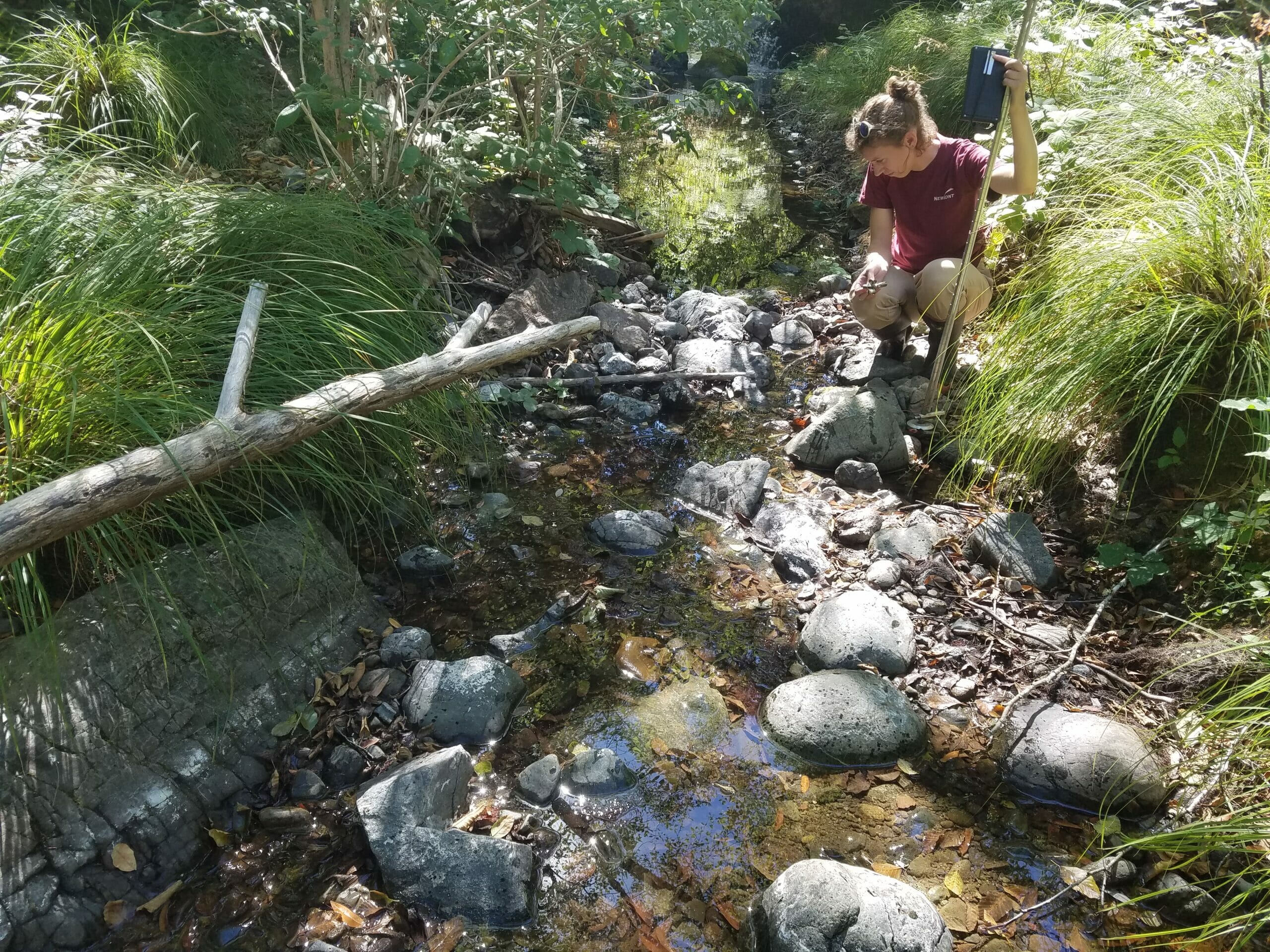One of the fundamental precepts of science is that, to understand a phenomenon or a system, it is necessary to observe change over time, the rate of change, and the influence of causal factors. In other words, to monitor and measure.
Yet frequently resource managers are stretched too thin to do consistent monitoring of salmonid populations and habitat conditions, especially in smaller streams and watersheds. Enter Trout Unlimited.
Through various initiatives, including TU’s Community Science, Headwaters Youth, and Michigan Trout Unlimited’s River Stewards programs, TU is helping to gather and analyze data to enable better management of stream and fishery resources.
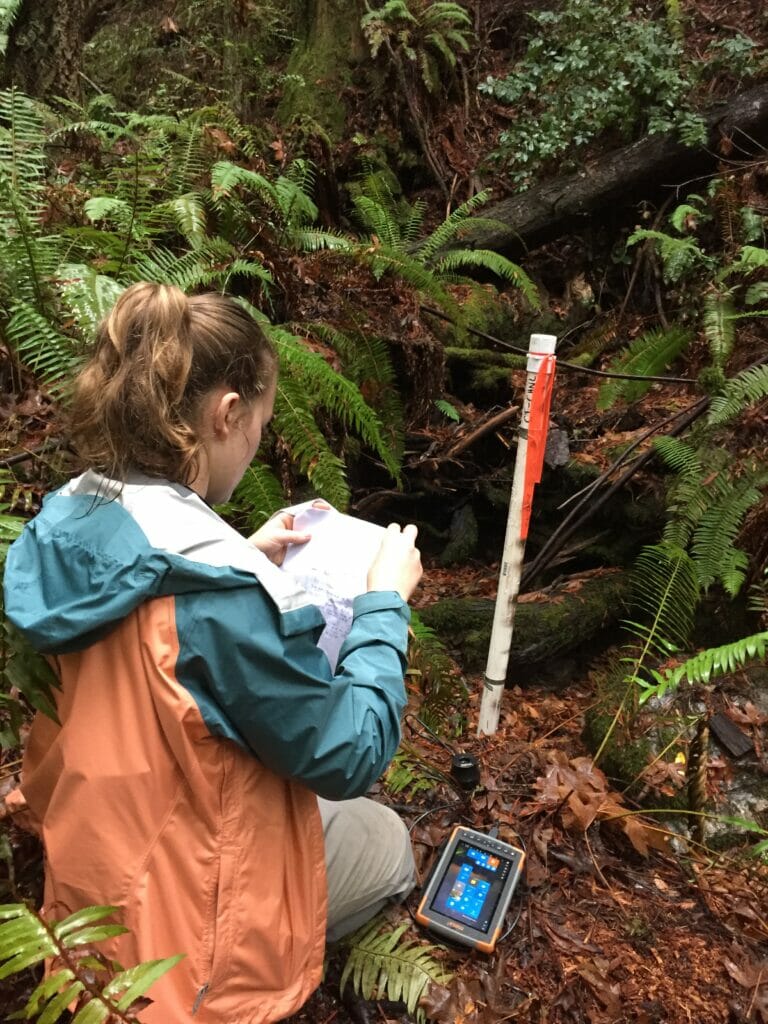
In California, TU maintains a program dedicated solely to measuring and monitoring streamflow and other hydrologic conditions, called Conservation Hydrology. The Conservation Hydrology team, led by Mia Van Docto, operates in conjunction with TU’s California Water Project to support and complete projects that enhance dry season streamflows in smaller coastal drainages and tributaries to larger rivers that provide important spawning and rearing habitat for coho salmon and steelhead, as well as in meadows in the Sierra Nevada mountains which are critical water sources for native trout.
The Conservation Hydrology program conducts wide-ranging hydrologic studies along the coast and throughout the Sierra. This program now operates a growing network of over 70 streamflow gages and 14 groundwater monitoring wells in headwaters critical to salmonids. This extensive gage network provides the scientific foundation for the California Water Project’s project and policy work as well as for the work of numerous project partners throughout the state.
No other conservation organization in California designs and operates such an extensive network of headwater stream gages.
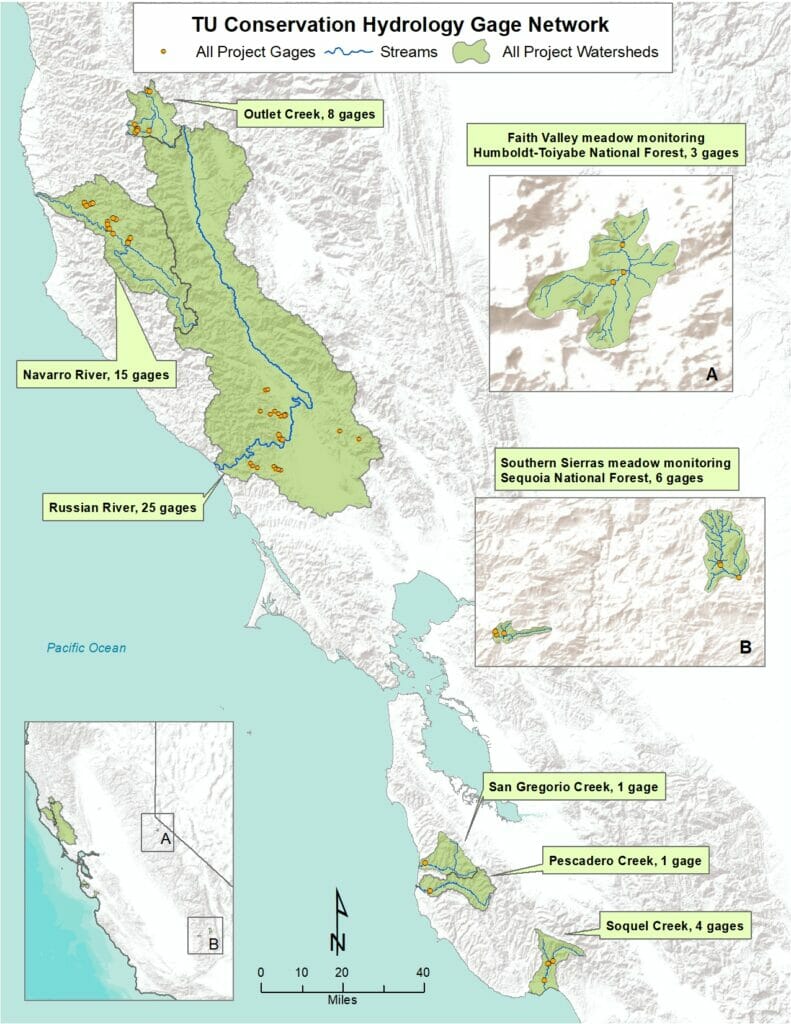
The Conservation Hydrology program uses tailored modeling and remote sensing techniques to estimate human water demands in coastal watersheds to assist streamflow project prioritization and development and conducts water availability analyses for water rights permitting. The data collected by the Conservation Hydrology team are also used to prioritize and permit streamflow and meadow restoration projects, monitor project effectiveness, and evaluate surface and groundwater interactions.
In addition, the program collaborates with researchers and fish biologist partners to determine ecological responses to streamflow, and makes the data from all of its monitoring available to research partners, resource agencies and other stakeholders. All of this is critical to advancing on-the-ground project implementation, policy and permitting reform, and flow science more broadly.
The Conservation Hydrology team’s work doesn’t stop there. The program also monitors groundwater and surface water interactions in key locations and conducts wet-dry-intermittent habitat mapping, which, when coupled with streamflow data and partner data on salmonid over-summer survival, growth, and other habitat and water quality metrics, provide information critical for stream reach and project prioritization.
Streamflow gaging also helps quantify the benefits of TU’s meadows restoration work. Restored healthy meadows act as natural reservoirs, soaking up snowmelt like a sponge and storing it as groundwater, then slowly releasing that water downstream during hot summer months. Higher elevation meadows recharge our river systems with cold, clean water to support a wide variety of wildlife and vegetation species, including native inland trout such as the Paiute and Lahontan cutthroat and the California golden trout.
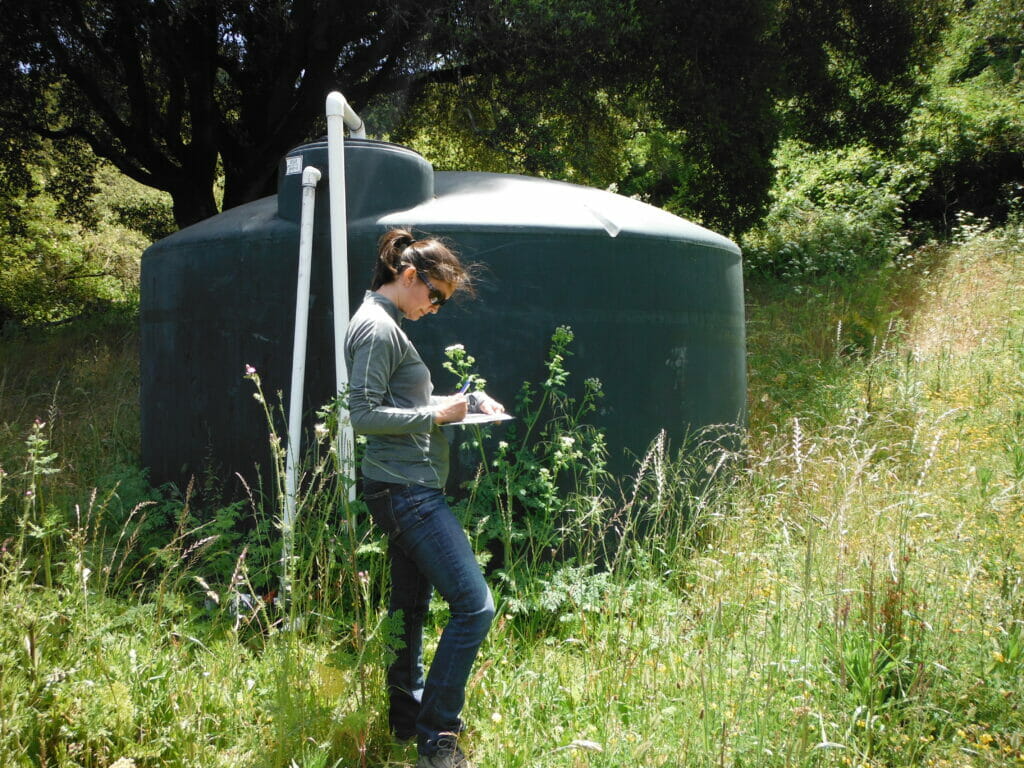
Collecting data for analysis is vitally important in coldwater conservation. If we are to be successful in managing populations, restoration efforts, and sustaining angling opportunities for salmon, trout and steelhead, we must have a solid sense of how many fish there are in a given system, how that system works (especially as the climate warms) over different time periods or seasons, and how sub-optimal or lethal habitat conditions can be improved.
TU’s Conservation Hydrology program has become one of the principal non-governmental providers of such data in California. In famous salmon and steelhead watersheds such as the Russian and Navarro Rivers, and in the headwaters of some of the best trout streams in the West, this program delivers crucial scientific data where it’s needed most: in-stream.

